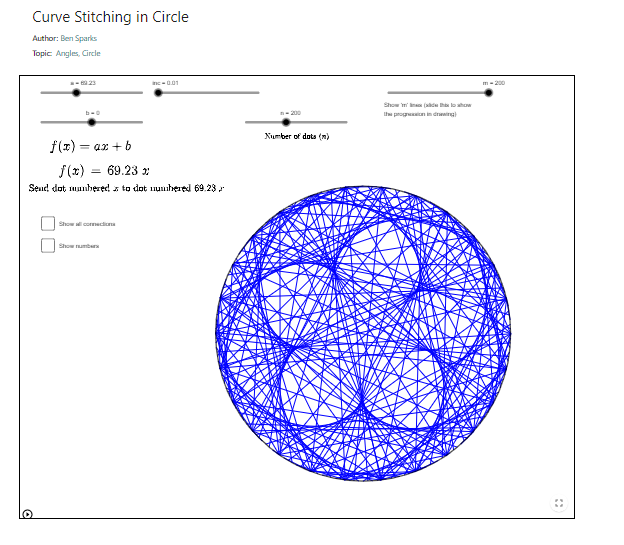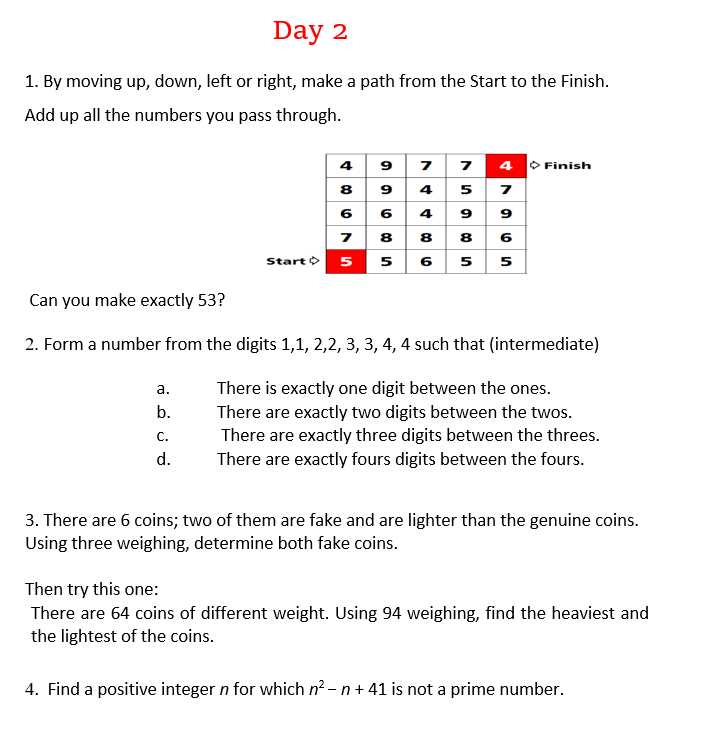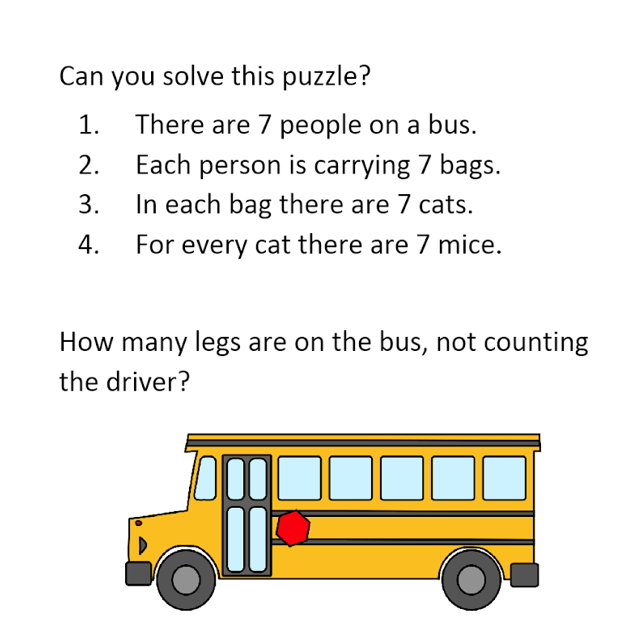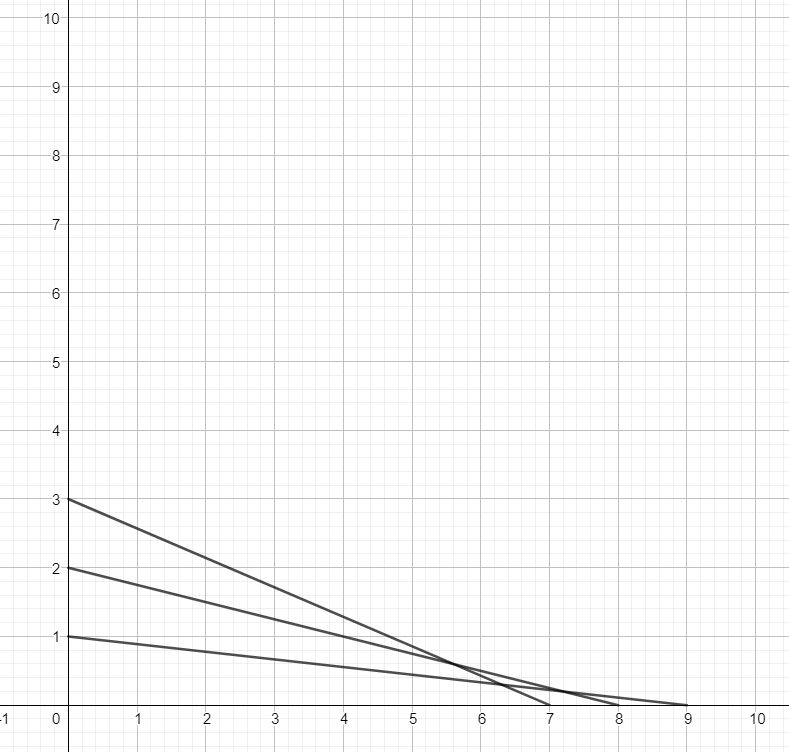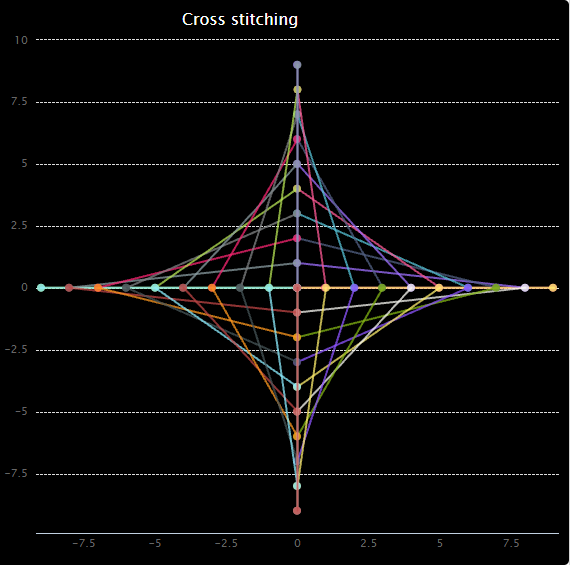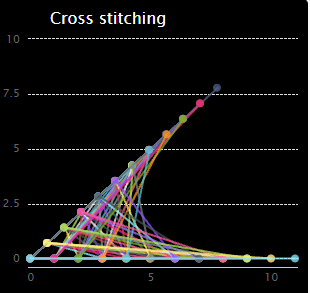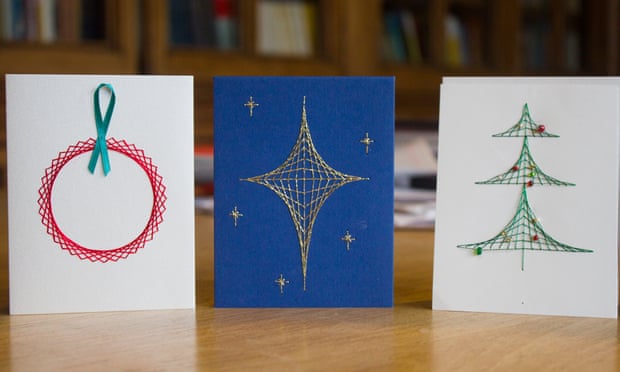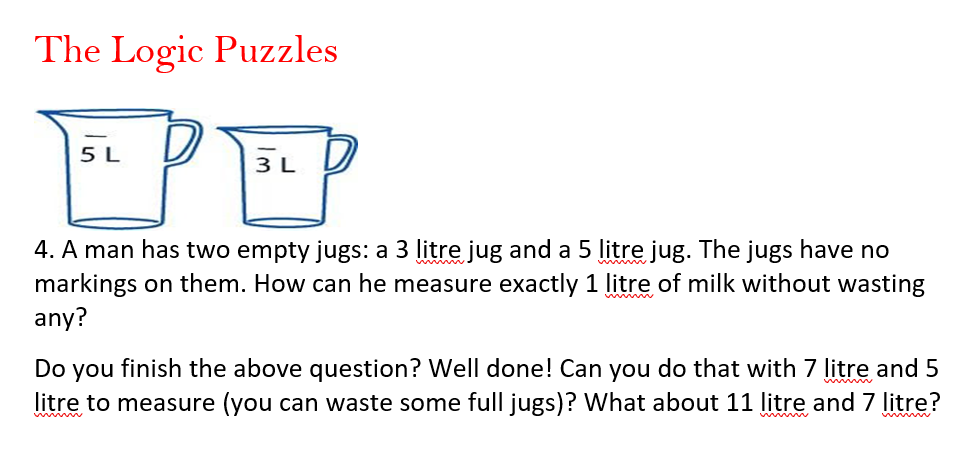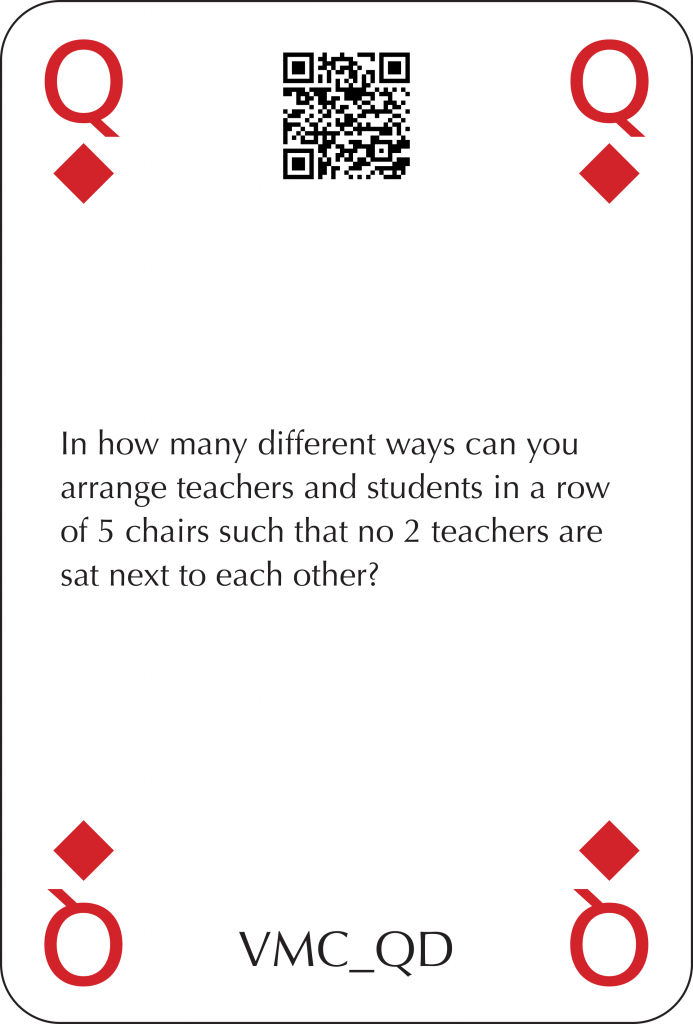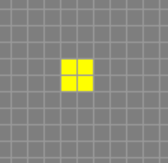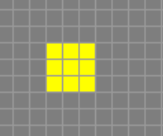I have a 10-sided dice with sides numbered: 1, 2, 3, 4, 5, 6, 7, 8, 9, 10.
I roll the dice many times until a same number has come up twice.
Example: 3, 1, 5, 6, 8, 4, 5
5 has come up twice so I stop. It took 7 rolls for this to happen.
- How many times do I need roll the dice until I am certain to roll a same number twice?
- What is the smallest number of times I can roll the dice before I could get a same number twice?
- How many times do I need to roll the dice until there is a 50% chance of getting a same number twice….? Try to do an experiment to find out….
Experiment: Use your calculator (RanInt#(1,10)) to simulate a dice roll. Keep rolling until you get a same number twice. Repeat this experiment 50 times in total and complete the table below.
Or write a program in Python to do this for you.
(Using a simulation to learn about probabilities is called a Monte Carlo Simulation)
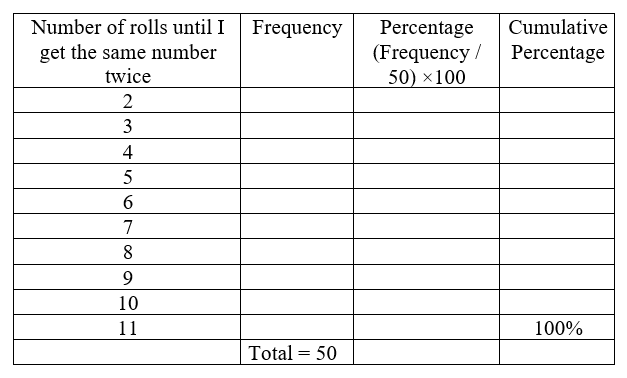
See here for a Python program and discussion of the solution and extensions …
